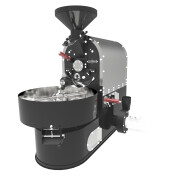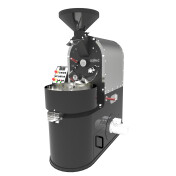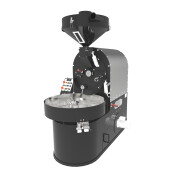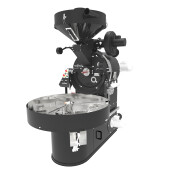
Coffee Moisture Content: Why It Matters and How to Measure It
Understanding coffee moisture content is essential for both coffee producers and roasters. Moisture content can affect everything from a bean’s shelf life to its roast profile and ultimately, the flavor of the coffee. Whether you're growing, processing, or roasting coffee, managing moisture levels is critical to achieving high-quality results. Below, we dive into what coffee moisture content is, why it’s important, and how to measure it accurately.
What Is Coffee Moisture Content?
Moisture content in coffee beans refers to the amount of water present in the beans. Typically, raw or green coffee beans have a moisture content of around 10-12%. Maintaining this level of moisture is essential for preserving bean quality during storage, transport, and roasting.
Coffee beans that are too moist (above 12%) can lead to mold, fermentation, and a decrease in quality. On the other hand, beans with low moisture content (below 10%) may result in a flat or lifeless cup due to over-drying.
Why Is Coffee Moisture Content Important?
Moisture content affects several aspects of coffee production and quality:
-
Roasting Profile: Coffee with balanced moisture content roasts evenly, allowing for consistent flavor development. Too much moisture, however, can make beans roast unevenly, leading to underdeveloped or bitter-tasting coffee.
-
Storage and Shelf Life: Moisture content helps protect coffee beans during storage. High moisture increases the risk of mold and bacteria, while low moisture can cause the beans to become too brittle and lose flavor. A balanced moisture level is ideal for retaining coffee’s aromatic compounds and oils.
-
Consistency in Cup Quality: Moisture affects the solubility of coffee, which impacts extraction. A consistent moisture level helps baristas and coffee enthusiasts achieve predictable results during brewing, resulting in a balanced and flavorful cup.
How to Measure Coffee Moisture Content
Measuring coffee moisture content requires a reliable moisture meter, like the G-Won Moisture Meter, specifically designed for coffee analysis. Here’s a step-by-step guide on how to measure coffee moisture accurately:
-
Calibration: Make sure the moisture meter is calibrated for coffee beans to ensure accurate readings.
-
Sample Preparation: Select a sample of beans representative of the entire batch. Avoid measuring beans that have been exposed to moisture changes, as this can distort results.
-
Taking Measurements: Place the sample into the moisture meter and follow the device instructions to obtain a reading. The G-Won Moisture Meter provides quick and precise measurements, giving coffee roasters and processors the confidence they need in assessing bean quality.
-
Interpreting Results: Aim for a moisture content range of 10-12%. If the reading is outside this range, consider taking steps to dry or re-hydrate beans to reach optimal levels.
Factors That Affect Coffee Moisture Content
Coffee moisture content is influenced by several factors, including:
-
Growing Conditions: Climate, rainfall, and altitude all impact how much moisture coffee beans absorb as they grow. Beans grown in humid regions tend to retain more moisture, while beans from arid climates may be drier.
-
Processing Methods: The way coffee is processed post-harvest can affect its moisture content. Natural or dry-processed coffees often have more variability in moisture content than washed coffees, as they are dried directly in the sun.
-
Storage Conditions: After processing, storing coffee beans in conditions with stable temperature and humidity is crucial. Fluctuating conditions can cause beans to absorb or lose moisture, leading to inconsistent moisture levels.
Tips for Maintaining Ideal Coffee Moisture Content
Maintaining ideal coffee moisture content is key to producing high-quality coffee. Here are some tips to help roasters and coffee processors maintain optimal moisture levels:
-
Use Quality Storage Solutions: Store coffee in cool, dry environments with controlled humidity to prevent unwanted moisture changes.
-
Monitor Regularly: Regular moisture testing with tools like the G-Won Moisture Meter helps ensure beans remain within the ideal moisture range.
-
Adjust for Seasonal Changes: Temperature and humidity fluctuations can impact stored coffee beans. Monitor storage conditions seasonally to minimize these effects.
-
Inspect Beans Before Roasting: Check moisture content before each roast batch to tailor the roast profile accordingly. Roasters can use data from the moisture meter to make precise adjustments and achieve desired flavor notes.
Conclusion
Coffee moisture content plays a crucial role in determining the quality, flavor, and longevity of coffee beans. From the initial stages of growth to processing and storage, maintaining the right moisture level is essential. Investing in a high-quality moisture meter, such as the G-Won Moisture Meter, allows coffee professionals to measure and control moisture content accurately.
By understanding and managing moisture content, roasters and producers can optimize coffee quality and deliver an exceptional cup, every time. To explore more tools and resources for professional coffee roasting, visit Coffedroasters.com.






